The Best Space Heaters for Warming Up Your Office, Garage, or Home
A simple way to beat the winter doldrums is to work or play in a warm environment. By warming up the desk area where you work, a craft room or workshop, your home gym, or wherever you go to relax, a space heater can help convert cold and uncomfortable to cozy.
While just about any heater will improve a cold area, if you want to make the most out of your purchase, selecting the right appliance is key. We gathered and tested a group of the most promising electrical heaters, one fired by propane, and a mighty kerosene-fired appliance that’s big enough to warm up a construction site.
We’ve also written a primer on how heaters work. So when manufacturers talk about radiant heat or ceramic heating elements, for example, you can better understand the relative merits of these features. After reading this background and our reviews, you’ll be able to select the right space heater.
Mục Lục
How Space Heaters Heat
Heat is transmitted one of three ways, and almost all portable heaters make use of all of these or two out of the three. Knowing how they heat is more than an exercise in physics; it can help you select the best appliance to suit your needs.
Radiation: A ray in the infrared (electromagnetic) spectrum travels through space, creating heat energy when it passes through a solid, such as you, furnishings, objects and equipment, or a structure (such as your home). Infrared heaters are useful when you need to warm yourself as well as objects that you come in contact with, such as your chair, a desk, or a workbench. They can also work well when you need to direct the heat in a specific directions. Suppose you are sawing lumber on saw horses and then you move the lumber to assemble it; you can point the infrared heater to where you are.
Convection: Movement of heat energy through a fluid, either a gas such as air or a liquid such as oil or water. Convection heaters warm up the air in an area and are good for providing warmth within a zone that you may move around in, such as the space around your desk or workbench.
Conduction: Movement of heat energy through a solid, by means of direct physical contact. Heaters that make use of conduction have hot surfaces that radiate heat in all directions (think of a wood stove). Again, these are good for heating an area.
Electric-coil fan heaters: The simplest and least expensive space heaters blow air over an electrical heating element.
Ideal use: Good for quickly producing heat in a small area, such as a shed or office, so that occupants can move about in a small zone of warm air.
Ceramic heaters: Simple, inexpensive, and versatile, these use an electrical resistance element encased in a ceramic block or a ceramic element that is itself semi-electrically conductive and generates heat. The block stores heat and radiates it out as infrared energy. Most of these space heaters have a fan, but a few primitive ones do not.
Ideal use: A better and quieter alternative to an electric coil fan heater. These are great for shared offices or wherever quiet heat is needed. Their simplicity makes them quite rugged; they have fewer parts to wear out or break.
Oil-filled radiators: These wheeled appliances are filled with oil heated by a resistance element. They slowly and noiselessly raise the air temperature within the area.
Ideal use: Best for a central location, especially where noiseless (not necessarily quick) heating is the priority, such as a home office or library.
Gas and liquid-fuel heaters: These appliances burn propane or kerosene to warm an infrared emitter that projects the energy.
Ideal use: Construction sites, garages, or work areas are the best places to use these heaters, since you want to place one at a comfortable distance and keep the work area unobstructed. These can direct the heat wherever you are working.
How We Test

Amy Wolff

Trevor Raab
We began our test with a Fluke 345—a clamp-on amp meter and a power-quality test instrument—to check whether the appliances drew more than their rated amperage. And using the meter’s oscilloscope, we examined each space heater’s energy use on the high setting to see whether a heating element, switch, or fan motor is misbehaving. Next, we used a thermocouple on a Fluke 233 meter to measure temperature on the heater’s front to gauge whether it’s a burn hazard should you accidentally graze it. After that, we checked whether the appliance would shut off if it tipped over. Many are equipped with a switch on the bottom of their case that will cut the power if the space heater should fall. Finally, we shot a thermographic picture of each heater using a Flir C3 camera to search for unusually hot areas or any other anomaly that escaped our other tests. After all that, these heaters came out on top.
Best Overall
Heat Storm HS-1500-TT Infrared Heater
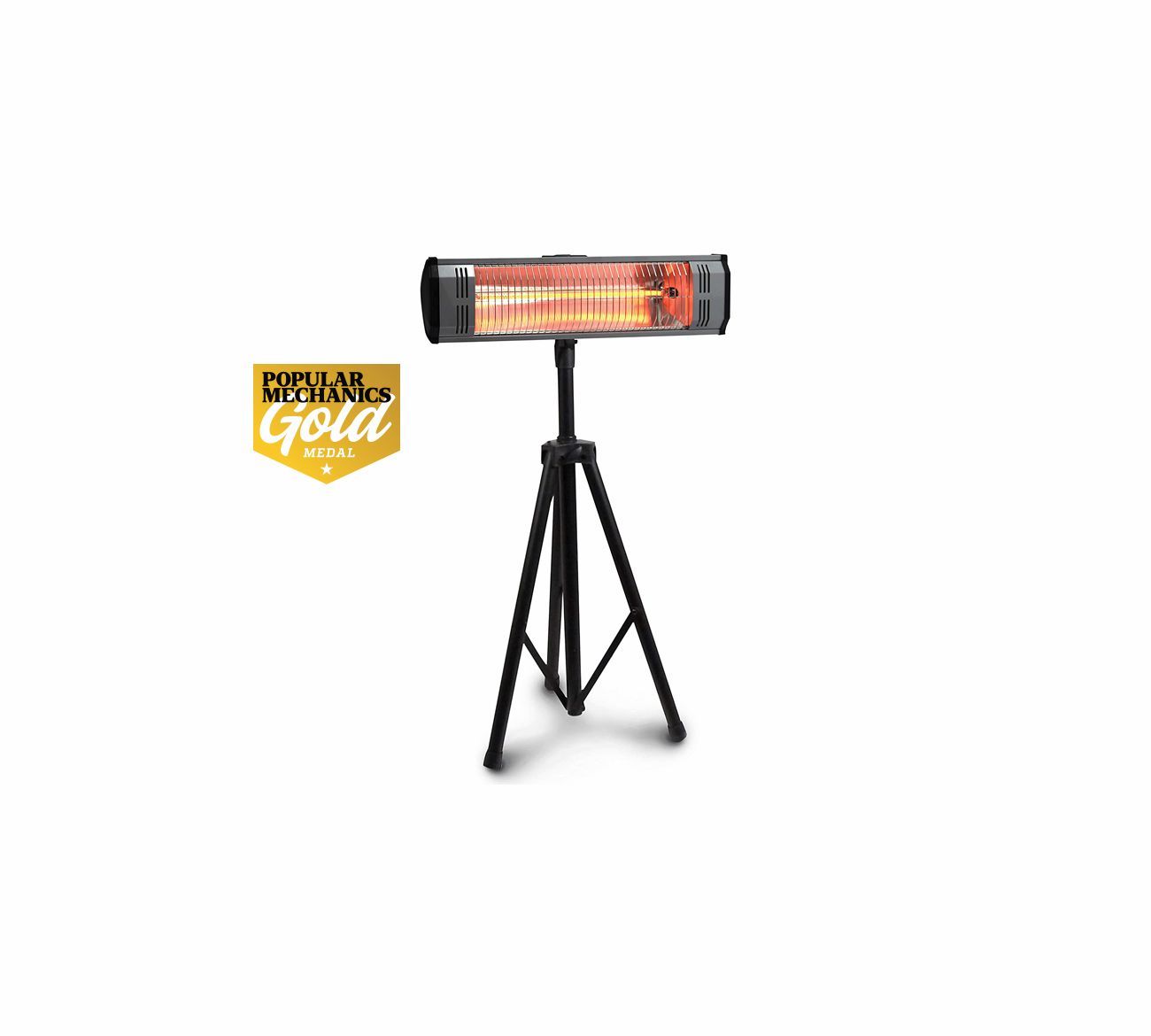
Best Overall
Heat Storm HS-1500-TT Infrared Heater
Now 52% Off
$95 at Amazon$110 at Home Depot$137 at Wayfair
Pros
Cons
Key Specs
Watts:1,500Type:Electrical radiantHighest grill temperature:323 degreesHighest recorded amps:12.2Weight:10.3 lb
This no-frills space heater has precisely one control: the on/off switch. Flip it, and the 16-inch carbon-fiber heating element glows cherry red in seconds. Its parabolic reflector bounces the infrared ray quite effectively. Don’t stand too close; optimal distance is several feet and we could feel the warmth out to 12 feet. This Heat Storm is rated for outdoor and indoor use, for a construction site, a patio, and in a workshop. Its tripod allows you to adjust the height from three feet to a bit higher than six feet. It could use a cord wrap. The heavy 13-foot cord is fairly stiff and flops around without some means to keep it under control
Best Value
Vornado MVH Vortex Heater
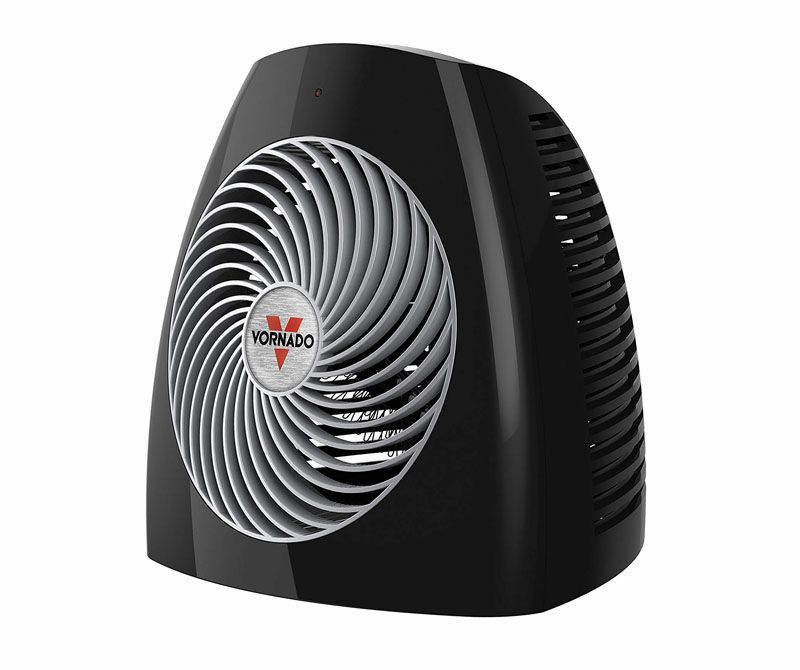
Best Value
Vornado MVH Vortex Heater
$70 at Amazon
Pros
Cons
Key Specs
Watts:1,500Type:Electrical resistanceHighest grill temperature:163 degreesHighest recorded amps:11.4Weight:4 lb
The MVH is a simple space heater with a circular resistance coil and a three-blade fan that blows through a spiral grill. The result is surprisingly quiet and evenly-distributed heat output adjustable to three settings: low (750 watts), medium (1,125 watts), and high (1,500 watts). The grill temperature we recorded is high but not objectionable. The appliance’s case stays cool to the touch, and a hand hold is molded into the back so you can comfortably reposition it. Sitting at floor level, and moving as much air as it does, the MVH is bound to pull in dust. We think it needs an air filter, to avoid a fire hazard. Lacking that, vacuum the MVH regularly.
BEST FOR LARGE ROOMS
Lasko AW300 Tower Space Heater
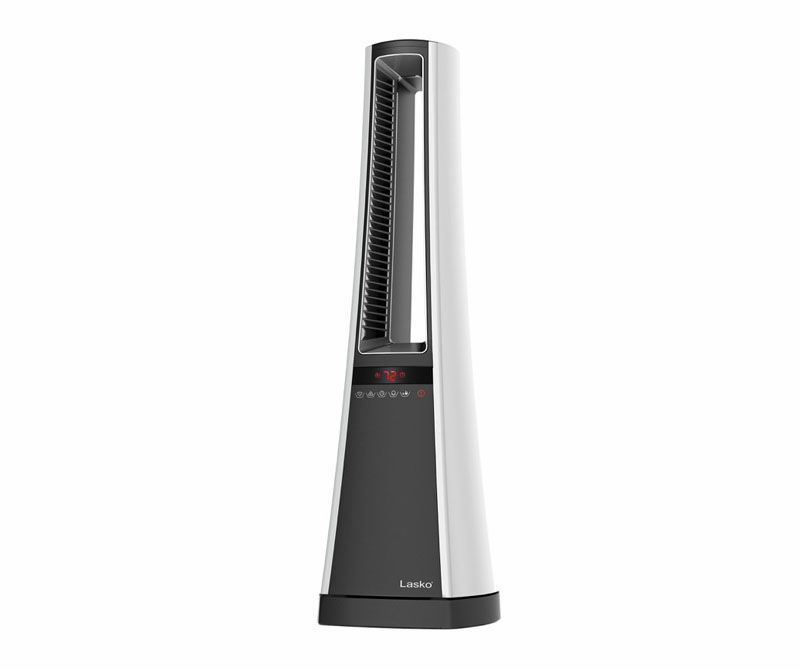
BEST FOR LARGE ROOMS
Lasko AW300 Tower Space Heater
Now 51% Off
$98 at Amazon$158 at Walmart
Pros
Cons
Key Specs
Watts:1,500Type:Electrical ceramicHighest grill temperature:161 degreesHighest recorded amps:12.2Weight:9.4 lb
Lasko calls the AW300 “bladeless,” as if it lacked a fan. It uses a multi-vane impeller instead. This fanless design (to call it that) does contribute to the appliance’s quiet operation, as it pulls in air through its base and into its tower. It’s equipped with a cleanable air filter, right outside the impeller, which you can access through a tool-free hatch. We also like the sleek touch pad on the front for controlling the wattage setting for the heating element, tower oscillation, and the eight-hour timer. The large amount of air flow and the appliance’s even heat distribution helps it bring a room up to a comfortable temperature faster than other space heaters. One gripe: The battery hatch cover on the remote is difficult to remove.
BEST BUDGET OPTION
Andily FH105A Space Heater
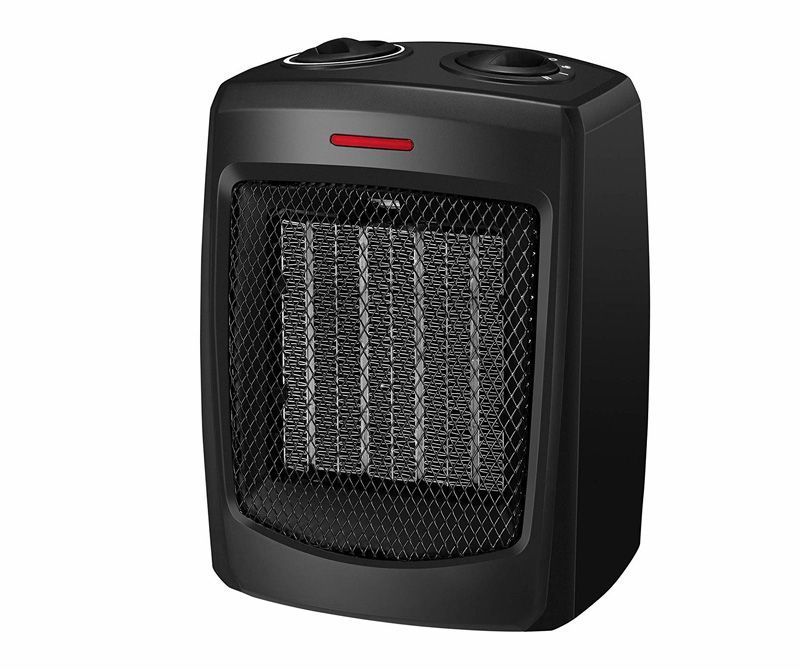
BEST BUDGET OPTION
Andily FH105A Space Heater
Now 19% Off
$22 at Amazon
Pros
Cons
Key Specs
Watts:1,500Type:Ceramic with fanHighest grill temp:302 degreesHighest recorded amps:11.92Weight:2.4 lb
When we saw that this had more than 4,000 Amazon customer reviews to its credit, we had to test it. And we were pleasantly surprised by its performance. Its two ceramic elements bring up the heat quickly. On the low setting, it’s a 750-watt space heater; on the high setting, it’s 1,500 watts. It can also be used as a single-speed fan (without heat). A thermostat control knob on its left is dialed until the appliance shuts off. The thermostat turns the heater back on automatically when it senses that the surrounding air has fallen below the set temperature. Other than the fact that it’s a bit louder than other heaters, there’s not much more to say about it. It throws the heat—cheap. However, the Flir found that its heat pattern is oddly skewed to the left.
Best for Desk Tops
Honeywell HCE100B Heat Bud

Best for Desk Tops
Honeywell HCE100B Heat Bud
$27 at Amazon$52 at Walmart$42 at Wayfair
Pros
Cons
Key Specs
Watts:250Type:Ceramic with fanHighest grill temp:250 degreesHighest recorded amps:2.1Weight:1.4 lb
Honeywell named this appliance the Heat Bud; the name suits it. The little low-wattage heater is meant to sit on your desk (a safe distance from papers and your computer, naturally) and gently blow warm air across one or both of its ceramic heating elements. On its low setting (170 watts), you barely know that it’s on. On high, it projects a substantial amount of warmth, relative to its small size and modest wattage. The Heat Bud is a cute little thing, but keep in mind that its grill gets hot.
Twist on a propane cylinder and turn the ignition knob to light: that’s all there is to warming up a frosty space using this little gas-fired dynamo. It’s noiseless and, according to our Flir camera, produces a well-heated circle with a four-foot diameter. Mr. Heater estimates that, when placed in an enclosed space, the MH9BX’s infrared output can heat up to 225 square feet. That’s a lot of firepower in an appliance about the size of a toolbox. If you need a longer run time than its estimated three hours on high, you can buy a kit that enables you to hook it up to a 20-pound propane cylinder. As for its safety, it’s equipped with both an oxygen-depletion sensor, for operating in enclosed areas, and a tip-over switch that shuts it off. Be warned: It doesn’t take much of a breeze to blow it out.
BEST PORTABILITY
Lasko 5409 Space Heater
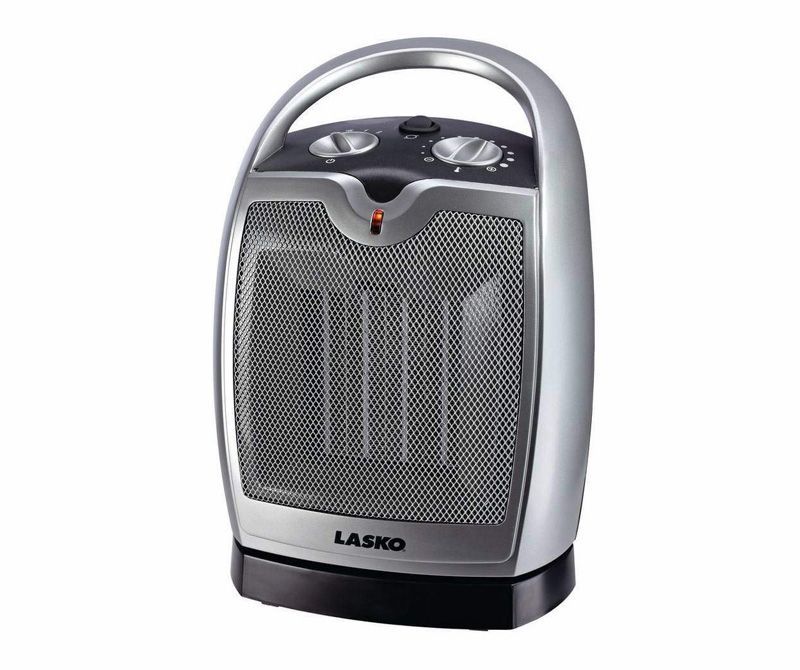
BEST PORTABILITY
Lasko 5409 Space Heater
$43 at Amazon$43 at Home Depot$44 at Walmart
Pros
Cons
Key Specs
Watts:1,500Type:Ceramic with fanHighest grill temp:178 degreesHighest recorded amps:12.21Weight:3.8 lb
Look at it this way, for less than the cost of a bag of groceries, you get a pleasant little space heater with two settings, 12 thermostat set points, oscillation, and ceramic heating elements. High heat is the typical 1,500 watts, which (unless you happen to be heating an igloo) is more than enough for what this appliance is intended for on a desk top or countertop or at floor level. Really, for those applications, we’d recommend the low setting. The owner’s manual doesn’t say what that is but our clamp-on Fluke meter gave us a reading of 7.6 amps/912 watts. All of those features, and you get one of the better handles we’ve seen in this class of products. The fan has an unintended white noise quality to it; it could be a bit quieter.
BEST AT FLOOR LEVEL
Honeywell HCE840B HeatGenius Space Heater
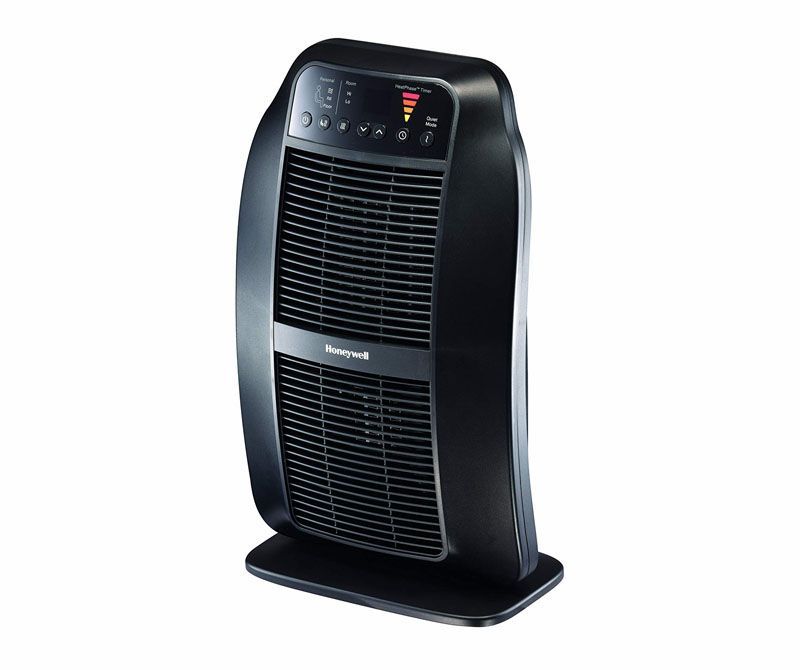
BEST AT FLOOR LEVEL
Honeywell HCE840B HeatGenius Space Heater
Now 22% Off
$72 at Amazon$123 at Walmart
Pros
Cons
Key Specs
Watts:1,500Type:Electrical ceramicHighest grill temperature:252 degreesHighest recorded amps:12.5Weight:4.8 lb
The aptly named HeatGenius employs two vertical heating elements, two fans, and a thermostat. You can set the fan speed and temperature to heat a room, or you can set it to heat just at floor level, mid-height, or in the head and chest area. It’s also equipped with a timer that adjusts the heat down over two hours, dropping its output every 30 minutes. After two hours, the heater turns off. One other feature that we really like is the appliance’s Quiet Mode. It shuts off the lower fan and runs the upper fan on low speed for almost noiseless heat. We wish Honeywell equipped this with a cord wrap for better storage. But that’s a design deficiency shared by most small space heaters.
BEST FOR LIVING ROOMS
Honeywell HCE 322V Space Heater
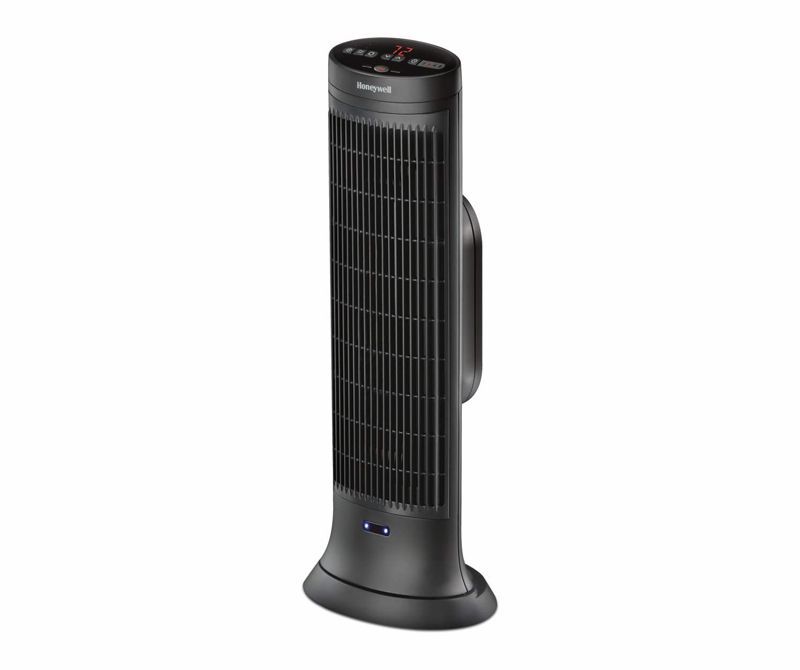
BEST FOR LIVING ROOMS
Honeywell HCE 322V Space Heater
$74 at Walmart$150 at Tractor Supply Co$104 at Overstock
Pros
Cons
Key Specs
Watts:1,500Type:Ceramic with fanHighest grill temp:217 degreesHighest recorded amps:12.67Weight:4.4 lb
This is a well-designed and well-made little space heater, a nearly flawless execution of what a small heater can be. First, it’s almost noiseless, yet it moves a fair amount of air and quickly heats up a large area around it. That’s also due to a very even heating pattern, based both on our perception of what the heater is putting out and confirmed with our Flir camera and the Fluke thermocouple. Its noiselessness, adjustability, output, and thermostatic control make it perfect for unobtrusive heating in a small home office or even a living room. And in terms of safety, its proximity sensor worked very well in shutting down the heater when something is positioned right in front of it.
BEST FOR CONSTRUCTION SITES
DeWalt DXH140KTHC Space Heater
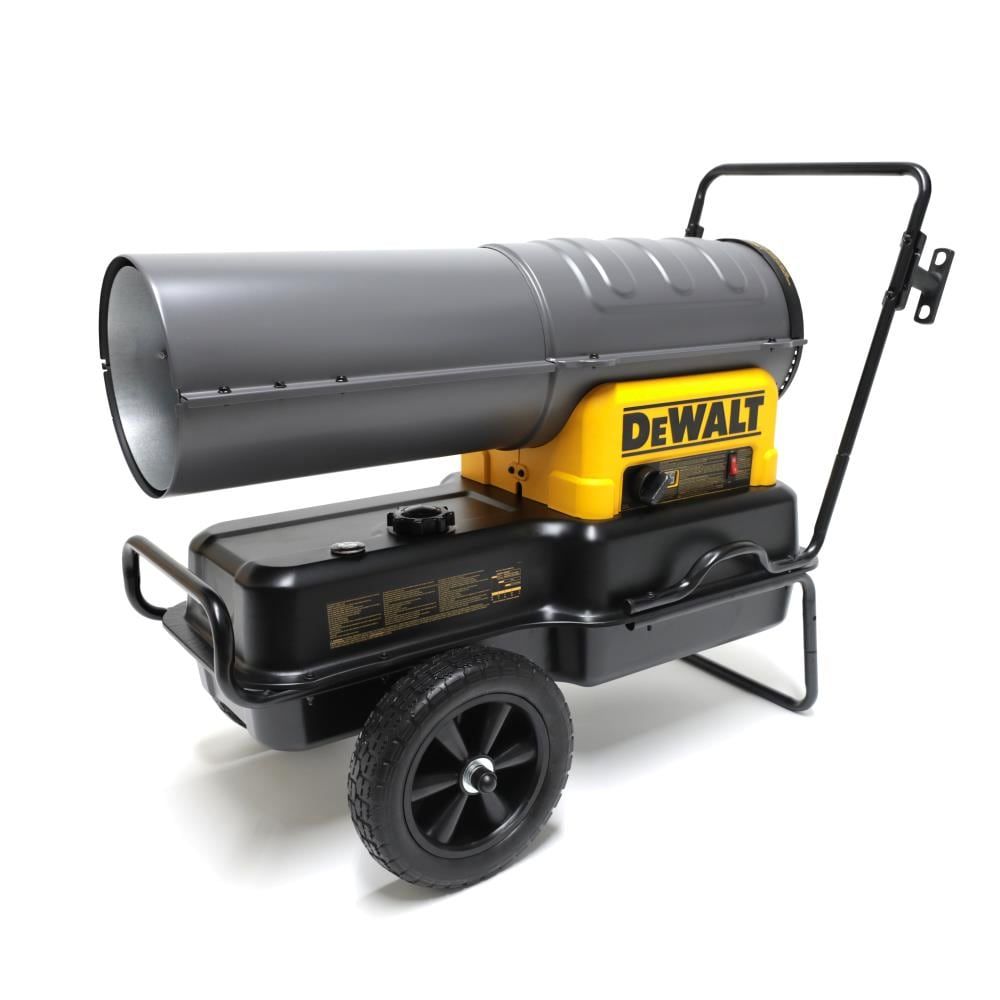
BEST FOR CONSTRUCTION SITES
DeWalt DXH140KTHC Space Heater
$349 at Lowe’s
Pros
Cons
Key Specs
BTUs:140,000Fuel:Kerosene, dieselWeight (without fuel):47 lb
The DeWalt is a robust heater designed for drafty areas, like construction sites and buildings under renovation. If your garage qualifies as something close to that, so be it. We found that it requires a minimum of two gallons to fire reliably. Yet the fuel cap is in an inconvenient place below the combustion chamber barrel, mystifying on an otherwise well-engineered appliance. (We recommend you get a long-neck flexible spout to fill the tank.) But once it’s loaded, press the on switch, dial the thermostat to the desired temperature, and watch it fire right up. We were pleasantly surprised by several things: its copious heat output, how little current it draws, and how its outside surface doesn’t get hot. Even after a half hour of operation, the barrel surface was only warm, thanks to an insulating air chamber between the barrel’s cover and its inner surface.

Roy Berendsohn
Senior Home Editor
Roy Berendsohn has worked for more than 25 years at Popular Mechanics, where he has written on carpentry, masonry, painting, plumbing, electrical, woodworking, blacksmithing, welding, lawn care, chainsaw use, and outdoor power equipment. When he’s not working on his own house, he volunteers with Sovereign Grace Church doing home repair for families in rural, suburban and urban locations throughout central and southern New Jersey.

















![Toni Kroos là ai? [ sự thật về tiểu sử đầy đủ Toni Kroos ]](https://evbn.org/wp-content/uploads/New-Project-6635-1671934592.jpg)


